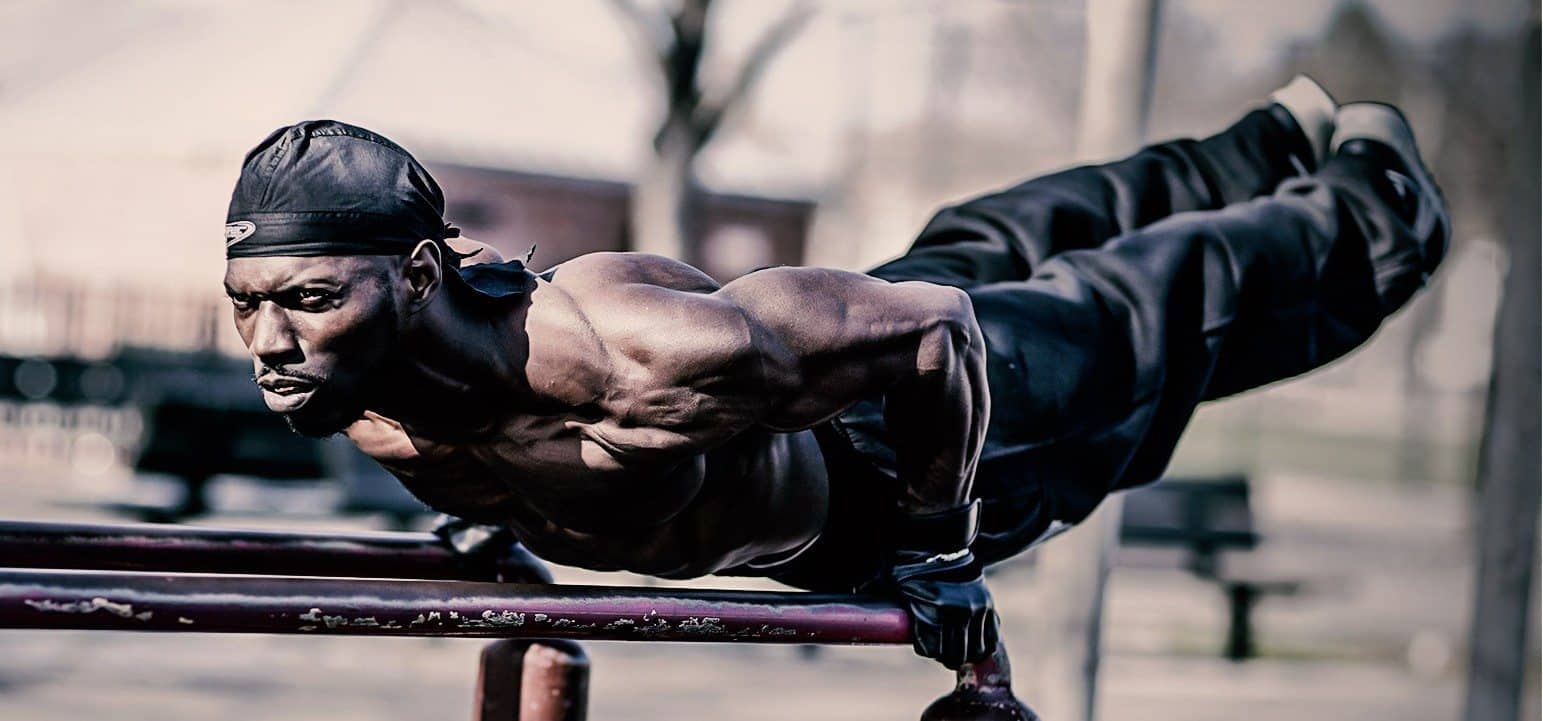What is Calisthenics?

When I tell people that I teach Calisthenics for a living I usually come across two differing reactions.
The first reaction is usually accompanied by a raised eyebrow coupled with a confused or concerned look upon where the person in question will ask if I mean the Calisthenics that involves ‘twirling ribbons, leotards and acrobatics.
Considering that I’m a short, stocky, muscular Maori lad who doesn’t look particularly handy with a ribbon (I’m also not wearing a leotard, just wanted to make that one clear) the raised eyebrow and confused/concerned looks are pretty understandable.
The second reaction usually is “What is Calisthenics”?
If you Google the word ‘Calisthenics’ you could be forgiven for still feeling a bit in the dark about just what it is.
Here in Western Australia (and indeed throughout Australia) if you google Calisthenics the top results will point you towards clubs that teach Artistic Calisthenics. Artistic Calisthenics is a competitive performance sport mainly aimed at children a large proportion of which is young girls.
Look a little further down the page and you may also come across images and videos of muscular Men and Women doing some amazing looking things involving their bodies, Bars and the ground. Its here that you might also come across the terms Street Workout or Urban Calisthenics to further complicate things.
A little confused?
I will try and make this a little clearer.
The Origins of Calisthenics
The word calisthenics originates “from the ancient Greek words kálos (κάλλος), which means “beauty”, and sthénos (σθένος), meaning “strength. It is the art of using one’s body weight and qualities of inertia as a means to develop one’s physique”.
In short it is Bodyweight Strength training that it meant to be pleasant to the eye. Easy to see how we came across two differing distinctions as to what Calisthenics is.
Calisthenics as we teach it here at Movement Co. became popular throughout America in the 19th Century but has been largely overshadowed by competitive sports such as Gymnastics in the public eye. Due to being overshadowed by competitive sports Calisthenics became more of an underground movement practised in Parks in Urban environments hence the term ‘Urban Calisthenics’.
Urban Calisthenics
Urban Calisthenics exercises involve the basic Calisthenic Exercises such as Pull-ups, Pushups, Dips and Squats but has also expanded to include Muscle-Ups, Front, Back and Side levers as Strength exercises. Urban Calisthenics also incorporates more dynamic movements such as 360 Muscle-ups, Bar Hops etc. To this day Basic Calisthenics is also used as baseline exercises for many Military institutions.
Street Workout
Throughout Eastern Europe Calisthenics or Urban Calisthenics has instead been called ‘Street Workout’. In both America and throughout Eastern Europe people are now often competing in teams or as individuals in ‘Battles of the Bars’ and recently World Competitions. The first World Street Workout competition took place in Latvia in 2011 after the formation of the ‘World Street Workout and Calisthenics Federation’.
So if you were wondering what sort of Calisthenics we teach here at Movement Co. then hopefully this has given you some idea. Fortunately or unfortunately depending on your viewpoint this does mean that we won’t be able to supply you with a ribbon to twirl in our Calisthenics classes. However you can feel free to bring your own, we don’t judge 😉
Thanks
Jason
Calisthenics Coach

I live in Perth and am revovering from total right hip replacement surgery. I have beeb doing – easily – the prescribed exercises but now need to take on more to build joint and overall strength, flexibility. I have been thinking of getting some parallel bars to boost my program. Any suggestions you have woul be appreciated. Sincerrly, Jon